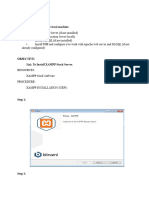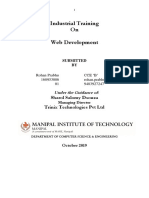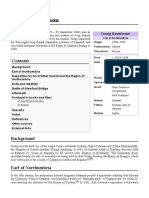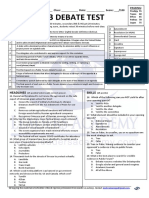0% found this document useful (0 votes)
13 views6 pagesIP Assignment 1
The document outlines the creation of various web components including a bike showroom webpage, a job application form, a development environment setup using LAMP/WAMP, a multi-page website for a small business, and a blog page design. Each section details objectives, HTML structures, CSS for styling, and implementation steps. It emphasizes modern web design practices and the HTTP request/response process for web pages.
Uploaded by
tech engineer teluguCopyright
© © All Rights Reserved
We take content rights seriously. If you suspect this is your content, claim it here.
Available Formats
Download as DOCX, PDF, TXT or read online on Scribd
0% found this document useful (0 votes)
13 views6 pagesIP Assignment 1
The document outlines the creation of various web components including a bike showroom webpage, a job application form, a development environment setup using LAMP/WAMP, a multi-page website for a small business, and a blog page design. Each section details objectives, HTML structures, CSS for styling, and implementation steps. It emphasizes modern web design practices and the HTTP request/response process for web pages.
Uploaded by
tech engineer teluguCopyright
© © All Rights Reserved
We take content rights seriously. If you suspect this is your content, claim it here.
Available Formats
Download as DOCX, PDF, TXT or read online on Scribd
/ 6
























































































